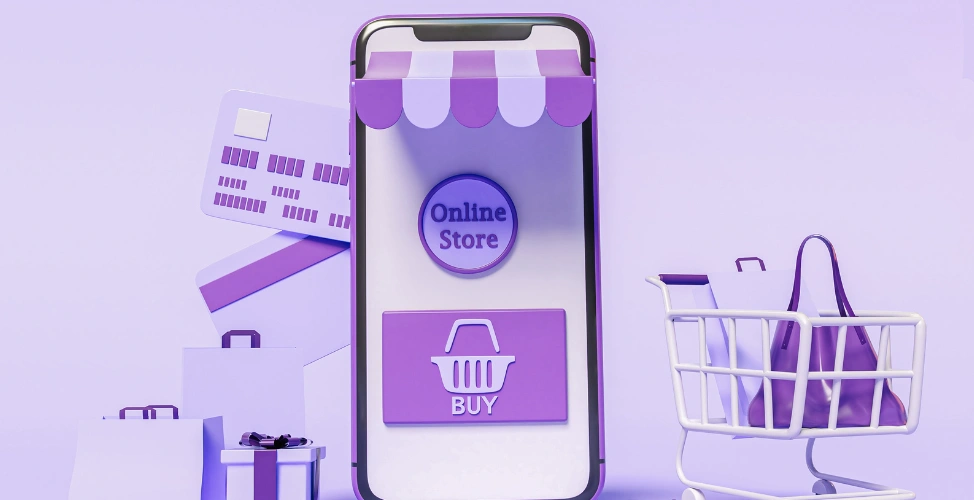August 23, 2021
The Ultimate Shopify Migration Checklist for a Smooth Store Transfer in Australia
Migrating your eCommerce store to Shopify is a big decision, and a big opportunity. As one of Australia’s fastest-growing platforms, Shopify offers businesses flexibility, scalability, and user-friendly design. But a successful migration requires more than just copying and pasting data. Without a proper checklist, you risk losing valuable customer data, breaking SEO links, or disrupting operations. To help, we’ve built this comprehensive Shopify migration checklist tailored to Australian businesses, complete with local payment integrations, tax settings, and real-world success stories from SmartOSC clients.

Highlights
- A step-by-step Shopify migration checklist ensures data accuracy, SEO retention, and smooth launch.
- Avoid common migration pitfalls like broken URLs, missing products, or payment gateway errors.
- SmartOSC supports Australian brands with end-to-end Shopify migration services backed by global expertise and local market knowledge.
Why Migrate to Shopify?
Benefits of Shopify for Australian Businesses
Shopify has rapidly become a leading eCommerce platform in Australia, and for good reason. As of early 2024, there are approximately 150,000 active Shopify stores in Australia, making it the third-largest market for Shopify globally .
Here’s why more Australian brands are turning to SmartOSC with a comprehensive Shopify migration checklist in hand: to ensure a smooth, secure, and strategic move that covers everything from data transfer and SEO preservation to design consistency and performance optimization—minimizing risks while maximizing long-term eCommerce success.
- Local Payment Integrations Tailored to Australian Consumers: Shopify supports a wide range of regional payment options including Afterpay, Zip Pay, POLi, and PayPal, which are essential for meeting customer expectations in Australia. This makes checkout seamless, trusted, and optimized for conversion.
- Scalable and Secure Infrastructure for Growth: Whether you’re processing 100 orders a month or 10,000, Shopify’s cloud-hosted infrastructure ensures consistent performance with no server maintenance on your end. It can effortlessly handle traffic spikes during promotions or holiday seasons while keeping your store secure and responsive.
- Responsive, Mobile-First Themes: With over 60% of Australian shoppers browsing on mobile, Shopify’s professionally designed themes ensure your store looks great and loads fast on any device. Customization is easy through Shopify’s drag-and-drop editor, and additional design flexibility is available for developers.
- App Ecosystem to Extend Store Capabilities: The Shopify App Store features thousands of tools for everything from loyalty programs and shipping calculators to AI product recommendations and accounting software. This gives you the flexibility to build a store that matches your business model and customer journey.
- 24/7 Support and Built-In Marketing Tools: Shopify offers round-the-clock customer support via chat, email, or phone. Built-in tools like SEO optimization, abandoned cart recovery, and Shopify Email help boost sales and customer retention without needing multiple third-party platforms.
When Is the Right Time to Migrate?
Migrating to Shopify might seem like a major step, but delaying the move could be silently impacting your business growth and efficiency. By using a well-structured Shopify migration checklist, you can spot the key indicators that it’s time to switch—such as poor site performance, limited scalability, or outdated integrations—and take action with confidence.
- Your Current Platform Is Outdated or Limiting Your Growth: If your existing solution lacks flexibility, crashes under pressure, or feels clunky to update, you’re missing out on modern features and faster innovation cycles. Shopify’s user-friendly admin interface and robust feature set keep your store agile and competitive.
- You’re Experiencing Performance or Mobile Responsiveness Issues: A slow-loading website or poor mobile experience can harm conversions. Shopify themes are built to be lightweight, responsive, and mobile-optimized, helping you capture more mobile-driven traffic and reduce bounce rates.
- Your Checkout Is Complicated or Doesn’t Meet Local Needs: Shopify supports Australian tax (GST), regional shipping rules, and preferred payment gateways out of the box. A faster, more localized checkout experience means fewer abandoned carts and higher customer satisfaction.
- Marketing and Integration Challenges Are Slowing You Down: If your store doesn’t sync easily with your CRM, email platform, or social media ads, you’re likely wasting time and missing opportunities. Shopify’s integrations and apps allow you to streamline email campaigns, Google Shopping feeds, Meta ads, and more with minimal friction.
See more: Top Strategies for Successful Shopify Plus Migration in Australia
Shopify Migration Checklist: Step-by-Step
Step 1: Pre-Migration Planning
- Audit your current store: product types, customer profiles, sales history, URLs, and CMS limitations
- Define Shopify structure: collections, product tags, metafields, payment gateways, and essential apps
- Set business goals: faster performance, better mobile UX, more conversions
Step 2: Data Backup and Inventory Mapping
- Backup everything, product images, descriptions, categories, and customer data
- Map SKUs, variants, and inventory to Shopify’s format
- Use CSV templates or data migration apps for accuracy
Step 3: Theme Selection and Customization
- Choose a conversion-optimized, mobile-first Shopify theme
- Customize content for Australian customers: local currency (AUD), spelling, shipping expectations
- Add brand assets, homepage layouts, and accessibility improvements
Step 4: Store Configuration in Shopify
- Configure tax settings (10% GST) and regional shipping zones
- Integrate Afterpay, PayPal, credit cards, and Zip Pay
- Install apps for email automation, reviews, popups, chatbots, and analytics
Step 5: SEO & URL Redirects
- Migrate SEO metadata: titles, descriptions, and alt texts
- Create 301 redirects from old URLs to the new Shopify structure
- Re-submit updated XML sitemap to Google Search Console
Step 6: Quality Assurance and Testing
- Test the full checkout flow, mobile experience, and third-party integrations
- Place test orders, trigger abandoned cart emails, and simulate returns
- Measure site speed and load times using Google PageSpeed Insights
Step 7: Go Live and Post-Launch Monitoring
- Launch during low-traffic hours and switch DNS records
- Monitor customer behavior, bounce rate, and order errors
- Track performance with Google Analytics, Hotjar, and Shopify Reports
Common Challenges in Shopify Migration
Migrating to Shopify can deliver substantial benefits, but it also brings technical challenges that shouldn’t be overlooked. Without a clear Shopify migration checklist, businesses risk facing issues like data corruption, SEO ranking drops, or broken site functionality. To ensure a smooth transition, it’s essential to anticipate these challenges and address them with a proactive, well-planned approach.
1. Data Loss or Corruption
Data integrity is one of the most critical factors in a successful migration. Losing product descriptions, customer records, or transaction history can not only damage user experience but also disrupt backend operations.
- Maintain Redundant Backups: Before initiating any migration step, ensure that you have:
- Full exports of your product catalog (including SKUs, descriptions, media)
- Customer and order history
- Custom content, such as CMS pages, blogs, FAQs, and reviews
Use both cloud and offline backups to prevent loss due to platform errors or connectivity issues.
- Validate Data Accuracy Post-Import: After uploading data to Shopify, verify that:
- Product variants and inventory match the original
- Customer details and past order data are intact and properly mapped
- No media files (e.g., images, PDFs) are missing or misaligned
- Use Trusted Tools or Professionals: Data formatting can be tricky, CSV misalignments or malformed fields may cause import errors.
Trusted tools like Matrixify or working with experienced migration partners like SmartOSC ensures smoother, error-free data transfers with quality assurance checkpoints.
2. Drop in SEO Performance
One of the most critical concerns during a Shopify migration is the potential loss of search engine visibility. Changes to URLs, mismatched metadata, or indexing issues can all impact your SEO performance. That’s why a thorough Shopify migration checklist should include steps to preserve SEO—ensuring redirects are properly mapped, metadata is retained, and search rankings remain stable to avoid revenue loss from decreased organic traffic.
- Preserve URL Structures Where Possible: Shopify’s default structure may add /collections/ or /products/ to your URLs. When possible:
- Match previous permalink structures using Shopify’s custom URL handle feature
- Minimize major changes to your highest-performing product and collection URLs
- Implement 301 Redirects with Precision
- Use a complete redirect map from your old site to Shopify
- Redirect each page individually instead of relying solely on catch-all rules
- Use Shopify’s built-in redirect feature or bulk redirect apps for efficiency
- Rebuild SEO Elements Accurately
- Reapply metadata: title tags, meta descriptions, image alt tags
- Add structured data (schema.org) for rich search snippets like reviews, pricing, and breadcrumbs
- Maintain H1/H2 structures and content hierarchy for consistency
- Monitor and Adapt Post-Launch
- Resubmit your updated sitemap to Google Search Console immediately after go-live
- Track keyword rankings, organic sessions, CTR, and bounce rates daily or weekly
- Use tools like Ahrefs, SEMRush, and Google Search Console to spot and resolve drops in visibility or crawl errors
Watch more: 10 Best Shopify Migration Agencies to Boost Your Australian Online Sales
How SmartOSC Ensures Seamless Shopify Migrations for Australian Brands
At SmartOSC, we combine deep Shopify platform expertise with tailored strategies for the Australian eCommerce landscape. Our team works closely with brands across industries to ensure that every migration is executed with precision, minimal disruption, and measurable performance gains.
We guide clients through the full migration lifecycle:
- Strategic Planning: We begin by auditing your existing store and defining the ideal Shopify architecture, covering everything from product taxonomy and collection hierarchy to on-site content and user experience.
- Localization and Compliance: We ensure your store aligns with Australian standards by integrating region-specific payment providers (e.g., Afterpay, Zip, POLi) and configuring tax and shipping systems to meet local regulations, including GST handling.
- Technical Execution and QA: Our team oversees secure data transfers, custom theme development, and full end-to-end testing, including checkout flows, app integrations, and mobile responsiveness.
- Performance Monitoring and Optimization: Post-launch, we track SEO performance, customer behavior, site speed, and conversion rates, making continuous improvements to maximize ROI.
A leading Australian fashion retailer partnered with SmartOSC to move from a legacy eCommerce platform to Shopify, guided by a comprehensive Shopify migration checklist. This strategic approach ensured a seamless transition with minimal disruption. Within just the first month post-launch, the retailer achieved:
- 40% faster page load speeds, boosting both user experience and SEO rankings
- 98% retention of SEO equity, preserving their organic traffic and search visibility
- Noticeable growth in mobile conversions due to improved UX and responsive design
With a local-first mindset and global delivery capability, SmartOSC ensures that Australian brands experience a smooth, scalable, and performance-focused transition to Shopify.
FAQs: Shopify Migration Checklist Australia
How long does a Shopify migration usually take?
The timeline depends on the size and complexity of your current store, but most migrations typically range from 4 to 8 weeks. This includes all phases, planning, data preparation, design and theme customization, app integration, testing, and final go-live. Larger or more customized platforms may require additional time for optimization and QA.
Will I lose my customer and order data during migration?
Not if the process is handled properly. By performing a full data backup and using proven migration tools, you can safely move all customer profiles, order history, and product data. SmartOSC follows strict protocols to ensure a secure and loss-free transition with full data integrity.
Can I migrate from WooCommerce or Magento to Shopify?
Yes, Shopify supports migration from major platforms including WooCommerce, Magento, BigCommerce, and even custom-built systems. With the right mapping and format adjustments, your product catalogs, customer data, and historical orders can be imported smoothly into the Shopify ecosystem.
Do I need technical skills to use the Shopify migration checklist?
Having some technical understanding helps, but it’s not a requirement. Shopify offers user-friendly tools, and partners like SmartOSC handle the complex steps, ensuring your theme, apps, and backend systems are properly configured for launch without technical headaches or performance issues.
Conclusion
Migrating to Shopify doesn’t have to be overwhelming. With a detailed Shopify migration checklist and the right partner by your side, you can avoid costly errors and fully leverage Shopify’s flexible, scalable platform. If you’re looking to migrate your store to Shopify in Australia, SmartOSC offers tailored migration solutions designed to meet your business needs, regional requirements, and long-term goals. Contact us now!
Related blogs
Learn something new today


